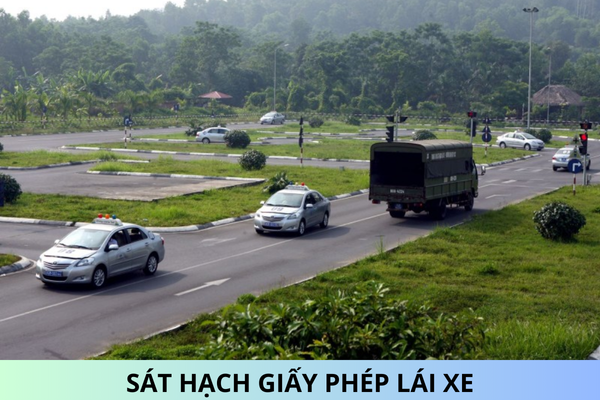Vietnam strives to have 30 airports by 2030 and 33 airports by 2050
Question: Is there the goal in 2030 that Vietnam will have 30 airports and 33 airports by 2050? - Question from Mr. Phu (HCMC).
Vietnam strives to have 30 airports by 2030 and 33 airports by 2050
Recently, the Prime Minister issued Decision 648/QD-TTg in 2023 approving the master plan on development of the national airport and airport system in the 2021-2030 period, with a vision to 2050:
NATIONWIDE AIRPORT AND AIRPORT SYSTEM PLANNING FOR 2021 - 2030, VISION TO 2050
1. Planning on the nationwide airport system
a) Period 2021 - 2030
The airport system is planned according to the model of spokes with 02 main hubs in the Hanoi Capital area and Ho Chi Minh City area, forming 30 airports including:
- 14 international airports: Van Don, Cat Bi, Noi Bai, Tho Xuan, Vinh, Phu Bai, Da Nang, Chu Lai, Cam Ranh, Lien Khuong, Long Thanh, Tan Son Nhat, Can Tho and Phu Quoc;
- 16 domestic airports: Lai Chau, Dien Bien, Sa Pa, Na San, Dong Hoi, Quang Tri, Phu Cat, Tuy Hoa, Pleiku, Buon Ma Thuot, Phan Thiet, Rach Gia, Ca Mau, Con Dao, Thanh Son and Bien Hoa (Thanh Son and Bien Hoa airports are planned to become airports for dual-use operations);
- Continue to maintain the planned location of Hai Phong International Airport approved by the Prime Minister in Decision No. 640/QD-TTg dated April 28, 2011 in Tien Lang district, Hai Phong city.
(Details are in Appendix I)
b) Vision to 2050
Forming 33 airports, including:
- 14 international airports: Van Don, Hai Phong, Noi Bai, Tho Xuan, Vinh, Phu Bai, Da Nang, Chu Lai, Cam Ranh, Lien Khuong, Long Thanh, Tan Son Nhat, Can Tho and Phu Quoc;
- 19 domestic airports: Lai Chau, Dien Bien, Sa Pa, Cao Bang, Na San, Cat Bi, Dong Hoi, Quang Tri, Phu Cat, Tuy Hoa, Pleiku, Buon Ma Thuot, Phan Thiet, Rach Gia, Ca Mau, Con Dao, Bien Hoa, Thanh Son and the second airport in the southeast, south of Hanoi capital.
(Details are in Appendix II)
Thus, the plan sets out a goal to strive for in the period of 2021 - 2030 to establish 30 airports in Vietnam, including:
+ 14 international airports: Van Don, Cat Bi, Noi Bai, Tho Xuan, Vinh, Phu Bai, Da Nang, Chu Lai, Cam Ranh, Lien Khuong, Long Thanh, Tan Son Nhat, Can Tho and Phu Quoc;
+ 16 domestic airports: Lai Chau, Dien Bien, Sa Pa, Na San, Dong Hoi, Quang Tri, Phu Cat, Tuy Hoa, Pleiku, Buon Ma Thuot, Phan Thiet, Rach Gia, Ca Mau, Con Dao, Thanh Son and Bien Hoa (Thanh Son and Bien Hoa airports are planned to become airports for dual-use operations);
At the same time, by 2050, there will be 33 airports, including:
+ 14 international airports: Van Don, Hai Phong, Noi Bai, Tho Xuan, Vinh, Phu Bai, Da Nang, Chu Lai, Cam Ranh, Lien Khuong, Long Thanh, Tan Son Nhat, Can Tho and Phu Quoc;
+ 19 domestic airports: Lai Chau, Dien Bien, Sa Pa, Cao Bang, Na San, Cat Bi, Dong Hoi, Quang Tri, Phu Cat, Tuy Hoa, Pleiku, Buon Ma Thuot, Phan Thiet, Rach Gia, Ca Mau, Con Dao, Bien Hoa, Thanh Son and the second airport in the southeast, south of Hanoi capital.

What is orientation for development of the national airport and airport system in the 2021-2030 period, with a vision to 2050 in Vietnam?
In Section III, Article 1 of Decision 648/QD-TTg in 2023, the investment and development orientation is as follows:
2. General aviation development orientation
General aviation and non-routine civil aviation activities are exploited in the direction of concentration at specialized airports and small-scale airports in order to seek and develop the aviation market, improve exploitation efficiency; restrict the exploitation of general aviation activities at airports with high take-off and landing density.
3. Development orientation of specialized airport
In order to meet the needs of socio-economic development, localities actively plan the location of specialized airports in the provincial planning after the location is approved by the Ministry of Defense and the locality assumes the prime responsibility for mobilizing resources to organize implementation. Researching and exploiting dual-use at some military airports according to the model of specialized airports.
4. Traffic direction connecting to the airport
The airport system is allowed to collect and release passengers and cargo by road system for airports with a capacity of less than 30 million passengers/year; by road and rail systems with airports with a capacity of 30 million passengers/year or more.
5. Convert domestic airport to international airport
Domestic airports are allowed to operate irregular international flights. To ensure efficient exploitation of the airport system, to meet the needs of socio-economic development, to ensure the flexibility and openness of planning, when airlines have the need to open international flights with secure infrastructure, the Ministry of Transport shall report to the Prime Minister for permission to transform it into an international airport.
Thus, development orientations include:
- General aviation development orientation
General aviation and non-routine civil aviation activities are exploited in the direction of concentration at specialized airports and small-scale airports in order to seek and develop the aviation market, improve exploitation efficiency; restrict the exploitation of general aviation activities at airports with high take-off and landing density.
- Development orientation of specialized airport
In order to meet the needs of socio-economic development, localities actively plan the location of specialized airports in the provincial planning after the location is approved by the Ministry of Defense and the locality assumes the prime responsibility for mobilizing resources to organize implementation. Researching and exploiting dual-use at some military airports according to the model of specialized airports.
- Orientation of traffic connecting to the airport
The airport system is allowed to collect and release passengers and cargo by road system for airports with a capacity of less than 30 million passengers/year; by road and rail systems with airports with a capacity of 30 million passengers/year or more.
- Converting domestic airports into international airports
Domestic airports are allowed to operate irregular international flights. To ensure efficient exploitation of the airport system, to meet the needs of socio-economic development, to ensure the flexibility and openness of planning, when airlines have the need to open international flights with secure infrastructure, the Ministry of Transport shall report to the Prime Minister for permission to transform it into an international airport.
What is orientation for investment in the airport and airport system nationwide in the 2021-2030 period, with a vision to 2050 in Vietnam?
In Subsection 1, Section III, Article 1 of Decision 648/QD-TTg in 2023, the orientation of investment and development is as follows:
1. Investment orientation
- The planned scale is the expected scale, calculated based on the demand forecast. During the implementation process, depending on the actual transport needs, the ability of investment resources to research and invest in investment phases to ensure project efficiency.
- For investment planning projects after 2030, in case localities have investment needs to serve socio-economic development and mobilize resources, report to the Prime Minister for investment approval.
Thus, investment orientation includes:
+ The planned scale is the expected scale, calculated based on the demand forecast. During the implementation process, depending on the actual transport needs, the ability of investment resources to research and invest in investment phases to ensure project efficiency.
+ For investment planning projects after 2030, in case localities have investment needs to serve socio-economic development and mobilize resources, report to the Prime Minister for investment approval.
Best regards!










